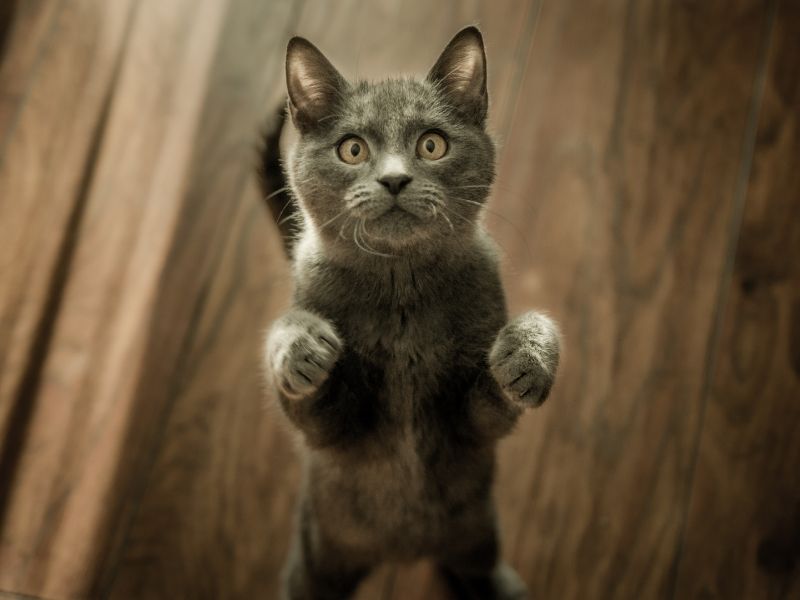Cats and Hardwood Floors
Last year we wrote a blog about dogs and hardwood floors. The consensus was hardwood flooring is great for dogs, as long as you have the proper type of finish and a species high enough on the Janka scale to prevent dents from heavy dogs. You can read more about it here: The Best Wood Flooring For Dogs.
While questions about how well wood floors hold up with dogs in the home are usually what we get, some people are curious about if hardwood floors are a good idea for homes with cats. This makes sense since cats are notorious for shredding couches and doorposts. People can’t help but think cats might treat the floor like a giant scratching post too. However, that is extremely unlikely. In fact, since cats are so light, as long as the floor is properly coated with a protective finish, scratches aren’t something you need to worry about. Basically, if you try to scratch a finished wood floor with your fingernail and there is no mark, a cat shouldn’t be able to scratch it either.
That being said, there are some things to consider. The biggest concern has to do with cat urine and vomit. Gross, huh? Just like a leak from a dishwasher or a spill, cat urine and vomit can also damage hardwood flooring if not quickly cleaned up. Most finished floors have a protective coating that helps them be resistant to this type of damage. However, if the floor is not properly protected and is made from a more porous wood like Ash, you could find yourself with a stained and stinky floor. Just like in any home with pets, children, or high traffic, it’s best to choose a harder, more durable species of wood like White Oak or Hickory.
Here are our top 5 tips to protect your hardwood floor from your little feline friends.
1. Use machine-washable area rugs
A good rug can protect your floor from contact with liquids. Plus, if an accident does occur, you can easily throw the rug in the washing machine.
2. Use litter and food mats
Cats can be messy, tracking litter through the house and spilling food and water outside their bowls. Having a food mat will prevent these messes from damaging your floor. This is true for all kinds of flooring, not just hardwood.
3. Avoid textured hardwood
It is best to have a smooth flat surface if you have a home with pets or children. That way, if anything gets spilled or accidents occur, you can easily wipe it up and don’t have to worry about liquid getting trapped in cracks or crevices.
4. Avoid beveled edges
For the same reasons as above, it is best to avoid beveled edges. If there are extra cracks and crevices in a wood floor, it can make it more difficult to completely clean up a spill or accident. A floor made from planks with square edges that have been finished on site will result in a smoother floor, making it easier to clean.
5. Choose a lighter colored floor
This tip is really more about appearance than protection, but we still thought it might be helpful! A light colored floor will not show animal hair as much as a darker floor.





